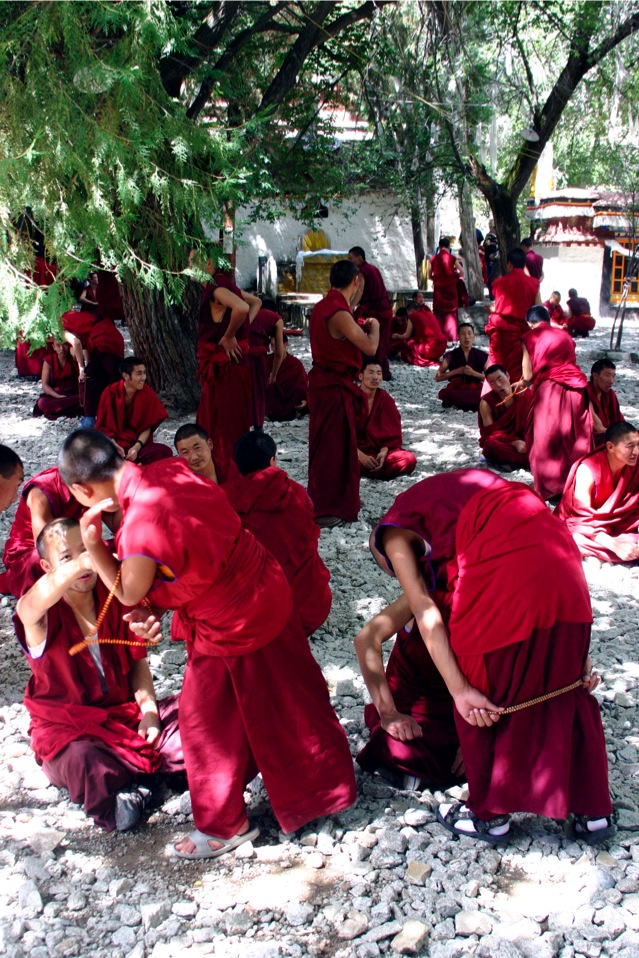
Potala Palace & Sera Monastery
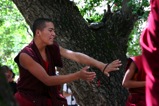
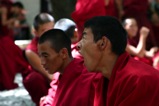

Visiting the Potala is such a bureaucratic hassle that three people of our group had spent all of yesterday’s morning trying to secure the tickets. Even now getting in proved quite an event, because Steffi’s and my passport no.’s were mis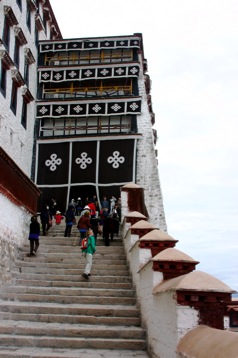 sing on the ticket. We got in nevertheless. The tour started on the very top of the building, so we started with a very long climb.
sing on the ticket. We got in nevertheless. The tour started on the very top of the building, so we started with a very long climb.
 sing on the ticket. We got in nevertheless. The tour started on the very top of the building, so we started with a very long climb.
sing on the ticket. We got in nevertheless. The tour started on the very top of the building, so we started with a very long climb. We had been warned not to have too high expectations about the Potala. As a consequence, we were pleasantly surprised! We started with a short tour through the Dalai Lama’s quarters, which were very impressive and full of ornaments, statues of predecessors, etc. The rest of the tour was through the Red Palace. The top floor consisted of smaller rooms with three -dimensional mandalas, stupas of past Dalai Lamas, and many more Buddha statues. The second floor was a continuation of this, and had a “wheel of time.” A true procrastinator? (Note: read Pratchett’s “Thief of Time” to understand...)
The ground floor had only few rooms, but they were truly spectacular. One room had a golden stupa for each Dalai Lama, with a statue of each behind them.
Taken together an impressive experience, a pity we couldn’t have breakfast first.
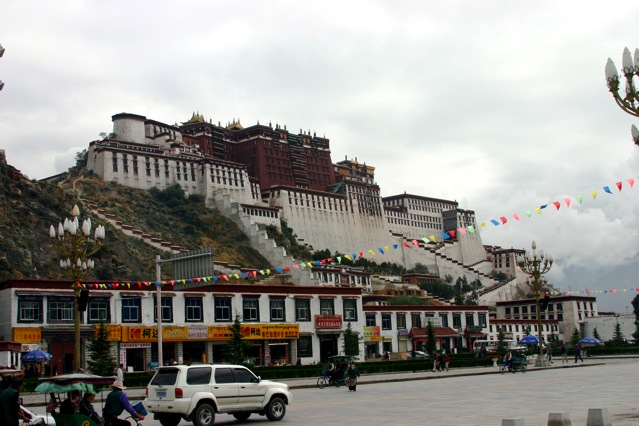
In the afternoon, we paid a second visit to the Sera monastery. We had only seen the thangka there and were attracted by the prospect of seeing monks debate. First we visited several of the halls, and saw more stupas, Buddhas, and Dalai Lamas. 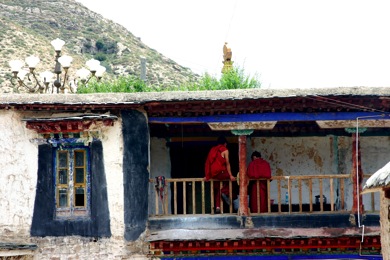

One important part of a Buddhist monk’s scholastic career is his debating skills, which are practiced throughout their time in the monastery, usually in an open courtyard. Today, we witnessed an afternoon of debating and were amazed by the iconic quality of the scene - the young monks in their dark red robes debating with flowing and aggressive gestures (and an occasional big smile) under old trees, sunlight trickling between the leaves - the scene struck us as the epitome if academia. Similar (presumably) to philosophers discussing at Plato’s Academy! Not even the inevitable tourists (yeah, us among them) disturbed the atmosphere of learning and the love of knowledge.
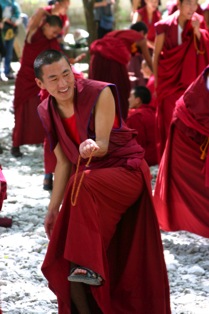
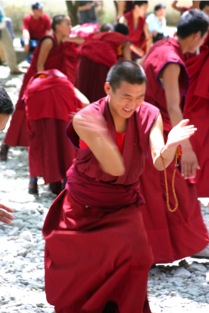




The main event, the debate, was very interesting. The debates were done in groups of two or three, with one monk standing and the other sitting. The standing monk would try to make his point not only by speaking but also by elaborate hand movements and claps. The sitting monk would then shake his head and point out the flaws in the argument. At least, that was our interpretation based on the somatic components.
(After asking our guide:) Here is how it works: monks form pairs. One, the “attacker,” stands up and, with great gusto, points out arguments critical of Buddhist theorems. Each point is underlined with a loud clap to “intimidate” the other, the “listener,” who keeps sitting down and eventually defends said theorems. 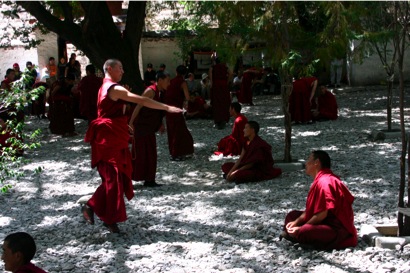 After a while, the two switch roles, allowing for flexible thinking.
After a while, the two switch roles, allowing for flexible thinking.
 After a while, the two switch roles, allowing for flexible thinking.
After a while, the two switch roles, allowing for flexible thinking. These debates are a rehearsal for the actual exams through which student monks may advance to a higher scholarly rank. Before the exam, the monks practice the most effective and convincing presentation of arguments. In the exam, they have to face a stern comittee of elder monks, who challenge them.
Other monks attending the exams express dismay or approval with the candidates’ arguments by booing or clapping, but the committee doesn’t show any response.
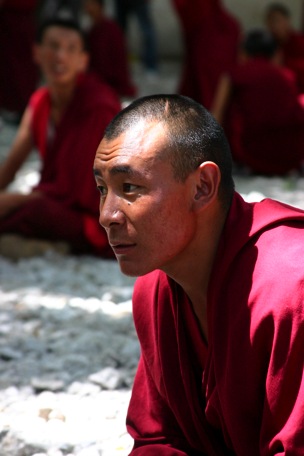
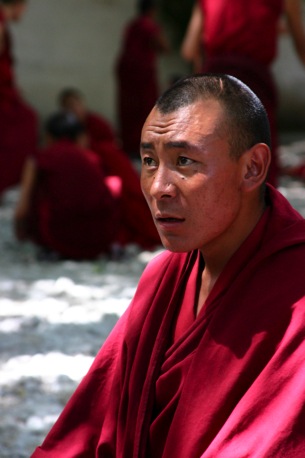
Even the Dalai Lama had to go through the customary set of “debating exams,” and relates in his autobiography how they filled him with dread and the very real fear of failing.
In the courtyard, however, we mainly saw the joyful aspect of debating and felt the pleasure accompanying a well delivered argument. Beautiful.
Our only annoyance was the ring of tourists around the courtyard. O.k., we were there, too, but some of them were completely shameless, trying to pose in between debating monks (who, amazingly, completely ignored them.)
